Overview of Costco Solar: Reviews and Offerings
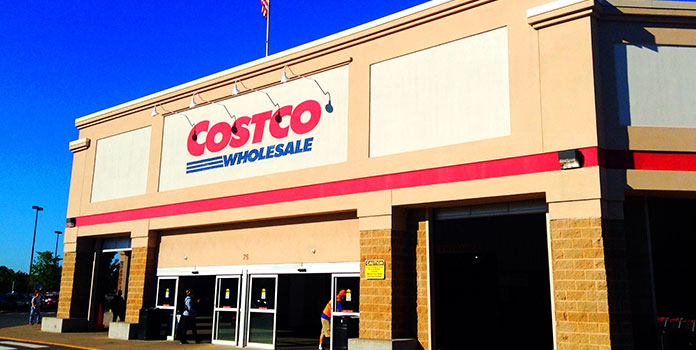
Costco offers two very different options for homeowners wanting to install solar.
Today, let’s take a deep dive into both of Costco’s solar offerings, including Costco solar reviews, to see which one – if either – makes the most sense for you.
If you’re already a Costco member, you might’ve seen solar installer Sunrun’s booth as you walked out with all your groceries, but did you know that this giant wholesaler actually offers two solar offerings? With one a kit and the other a ‘full service’ installation (ie Sunrun), they couldn’t be more different from each other and, indeed, they’re directed towards different consumers.
The solar kit is just that, a kit with a more DIY approach. Sunrun, though, is a solar installer/financier that takes you from start to finish with your installation. Let’s look into these offerings to see which one is right for you.
Costco’s Grape Solar kit
Costco sells an entire 5.8kW solar installation kit on their website for just a penny shy of $10,000. The system is sold through Grape Solar, a Chinese start-up based in Oregon, and includes Grape Solar panels, a SolarEdge inverter and power optimizers, and a mounting system to attach everything to your roof.
Specifically, the kit includes:
- 22 Grape Solar 265-watt polycrystalline solar panels (Model GS-P60-265-FAB2)
- SolarEdge 5000 inverter with P-300 power optimizers (judging from the image, Inverter Model SE5000A-US)
- Mounting system to bolt your panels to the roof
The kit does not include the necessary cables/wires to connect the solar panels to each other and to the inverter, so you’ll have to provide those separately. Nor does it include fuses/breakers to keep the entire installation safe.
You might be a little skeptical of a solar installation bought from Costco as a kit, so let’s start from the beginning: this is a legitimate kit from legitimate companies.
SolarEdge is a leading inverter manufacturer in the US and makes reliable, quality products. Thousands and thousands of their inverters are installed on homes across the US. You’d have absolutely no problem installing this equipment on your home.
Grape Solar, while not well known, imports solar panels to the US from China (where most of our panels come from anyway). While you’re not getting the best solar panels on the market, they’ll work and come with pretty standard long-term warranties (check out our review section below for more on this).
Costco’s site doesn’t specify the manufacturer of the mounting hardware, but looking at the images, everything looks pretty standard.
In regards to size, the installation is suited for most homeowners’ needs. According to NREL’s 2017 benchmark of solar costs (see link below), a 5.8kW installation like the kit above clocks in at just a hair larger than the average US residential solar installation (5.7kW), so if you’re ‘average’, Costco’s kit is should fit your needs pretty well (though of course that depends your actual energy use!)
Is the Grape Solar kit worth the cost? Well, at $9,999.99, you’re paying $1.71 per watt ($9,999.99 / 5830 watts = $1.71 per watt) for your equipment (again, not including fuses, breakers, and wiring, which can add a few hundred dollars). Is that a good deal? Let’s take a look!
Is the Grape Solar kit cheaper than hiring out the entire installation?
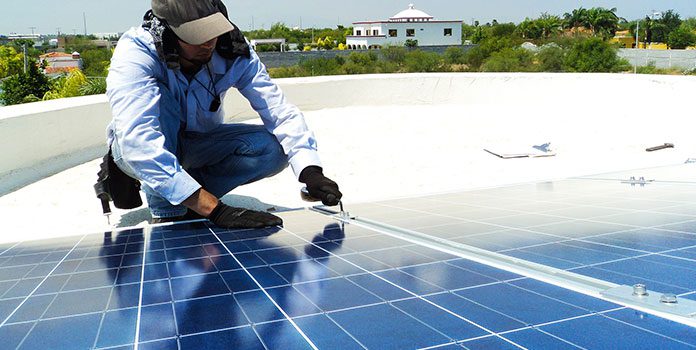
So the Costco/Grape Solar kit above costs about $1.71 per watt. Is that a good deal compared to simply purchasing equipment and labor together through an installer like Sunrun or SolarCity?
In their 2017 benchmark of solar costs, the National Renewable Energy Lab added up the cost of each component of residential solar installations (solar panels, inverter, labor, permit costs, sales and marketing, profit, etc) and found that the solar panels, inverter/optimizers, and racking system (the components included in the Grape kit) should account for 22% of the entire cost of a residential solar system.
With NREL estimating that installations in the US cost around $2.72 per watt (with power optimizers), this adds up to about $0.61 per watt (p.21).
Did you catch that? NREL estimates that the panels, inverter, and mounting hardware cost – on average – $0.61 per watt. We don’t need to tell you that this is much, much lower than the Costco/Grape Solar kit – a full 64% cheaper!
Although big installers report higher installation costs than $2.72 (Sunrun = $2.92 per watt average, Vivint = $2.98 per watt average, according to the NREL report above, p.22), equipment is a hard cost that likely remains pretty constant across all installers. Basically, everybody’s paying the same price for solar panels, inverter, and mounting hardware – probably somewhere very close to $0.61 per watt.
To break it down: the Grape Solar Kit is very expensive! Still though, the question remains: is it cheaper than hiring an installer for the full process? Actually, that depends:
- Yes, it is cheaper. If you’re going to DIY the entire installation, you avoid paying labor costs, sales and marketing costs, overhead, profit, and all the other costs big installers pass on to the homeowner. However, keep in mind that some utilities require at least one NABCEP-certified installer for installations to be eligible for net metering and interconnection, so be sure to research your utility’s regulations beforehand! If you install yourself and aren’t NABCEP-certified, you may not be able to connect to the grid! Also, as we’ll see below, it may also be possible to purchase equipment from other online retailers for much less overall.
- No, it isn’t cheaper. If you’re just looking for a way to save some cash, but still want to hire a solar company to install your system for you, this is not the way! You’ll end up spending more money, as you’ll miss out on the lower equipment prices that installers can secure directly from manufacturers or distributors.
In all honesty, purchasing a large kit like this for a grid-connected home really just doesn’t make a lot of sense (unless you work in the solar industry and can safely install it yourself). Don’t get too sad though! There are other ways to lower your costs.
The best thing you can do is talk to and receive quotes from multiple installers and pay in cash upfront (thereby avoiding additional loan/lease fees). And don’t forget those local companies, which can often come in at 10% less than the big boys like Sunrun and SolarCity!
Grape/Costco solar reviews
 Do Grape Solar products see good reviews? With the company being relatively small, there aren’t too many reviews out there of their products. They mostly sell solar kits via well-known channels like Costco, Amazon, and Home Depot.
Do Grape Solar products see good reviews? With the company being relatively small, there aren’t too many reviews out there of their products. They mostly sell solar kits via well-known channels like Costco, Amazon, and Home Depot.
If we take a peak at their solar panels and other equipment on Amazon though, Grape Solar actually enjoys excellent feedback. Buyers note their panels appear to be of high quality and very few report any issues. Their 100 watt solar panel, for example, enjoys a 4.6 out of 5 stars, based on 55 reviews (as of December 2017).
Their panels include a 10 year parts warranty (admittedly, a bit on the low side compared to other panels’ 12 to 15 years) and a 25 year production guarantee (on par with other companies).
While warranties are very important, you also need to know that the company will be around long enough to support that warranty – not a given in the solar industry. Grape is a new company that doesn’t manufacturer themselves, but simply imports products to the US. It’s difficult to know where they’ll be in 25 years, so keep that in mind.
On the other hand, with that being said buyers report their equipment seems high quality and their panels have passed all the quality and safety checks all other panels in the solar industry have: UL certification, CEC listed, and Type 1 fire classification. That, along with the warranty, should give you some peace of mind.
In regards to the kit, as we mentioned the SolarEdge inverter is a well-known, tested, and reliable product. The inverter itself comes with a 12 year warranty and the power optimizers have a 25 year warranty. You’d have no issues putting this on your home.
Lastly, the racking system includes a 10 year warranty. As we mentioned, Costco doesn’t specify the manufacturer, but from the images of aluminum rails, L-feet, and panel brackets it looks like pretty standard equipment.
If my arm was pulled, I’d say Grape solar panels are great for small, DIY installations. Indeed, their product line supports that assumption, as they seem to focus on manufacturing 50 watt and 100 watt panels typically used on RVs, boats, and camper.
If you’re looking to save money – either via DIY or with your installer – you should probably look elsewhere, this kit is just too expensive to make sense. Case in point: On websites like wholesalesolar.com, you can buy a comparable system – that also includes wiring, cables, and safety disconnects – for about $1.58 per watt, saving you about $1,500 in total!
Costco and Sunrun
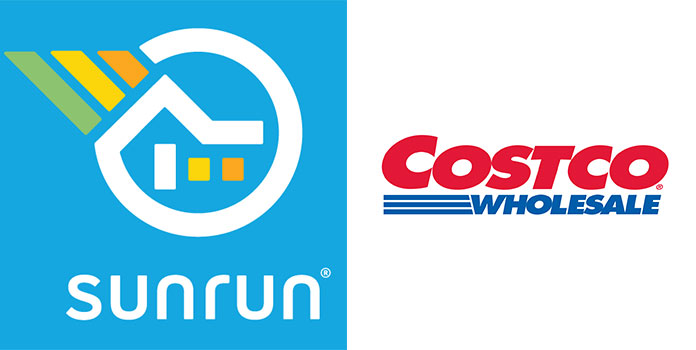
If you’re not looking for a kit, Costco has also partnered with Sunrun to offer their members ‘full service’ solar installations, with financing and installation all included. Costco is really just a sales channel for the standard Sunrun service, so when you’re evaluating going solar with Costco, you’re really evaluating Sunrun. That being said, working through Costco instead of Sunrun directly does have quite a few perks!
First off, Costco offers customers who go solar with Sunrun a cash card worth 10% of the equipment cost. With equipment accounting for about 30% of the total install cost, and Sunrun’s installation cost being around $2.92 per watt (see NREL report above), that’s about $0.10 per watt you’ll get back. That doesn’t seem like much, but for the average 5.7KW installation, that’s $570!
They also offer an Executive Member cash back incentive worth another few hundred bucks, but you’ll need to talk to your Costco branch for more info on this. Overall, going solar with Sunrun via Costco allows you to knock quite a few dollars off your final installation cost!
Secondly, Costco offers a longer warranty for roof penetrations (15 years) than Sunrun alone does (10 years). If you’re worried about your installation causing roof leaks, this is major plus!
Sunrun also offers Costco customers a dedicated 24/7 customer service line. Sunrun takes their Costco projects very seriously, as the wholesaler is an important sales channel for them. If a Costco customer has a problem, Sunrun responds with a bit more spring in their step to get the problem resolved.
Lastly, you’ve got Costco on your side if something ever goes wrong! Reading over Costco/Sunrun customer reviews (which we do below!), you can see just how useful this really is! To wrap all this up, if you want to go solar with Sunrun, it’s worth it to join Costco!
In regards to the actual design and installation process, working with Sunrun via Costco is no different than any other Sunrun installation (and are performed by the same employees). That’s not a bad thing per se, just something to note.
Just a few years ago, Sunrun was by far the most expensive of all the national installers, but they’ve really focused on lowering costs since 2015 and have done a great job of it.
In Q4 2015, their installation costs clocked in at $3.64 per watt, astronomically high when compared to SolarCity’s $2.71 (p.17). A dollar might not seem like much, but for an average-sized 5kW system that adds up to $5,000 more! Today, Sunrun’s installation cost hovers around $2.92 per watt – not on par with SolarCity by any means, but a bit cheaper than rival Vivint’s $2.98 per watt (see NREL benchmark above).
Sunrun Costco Reviews
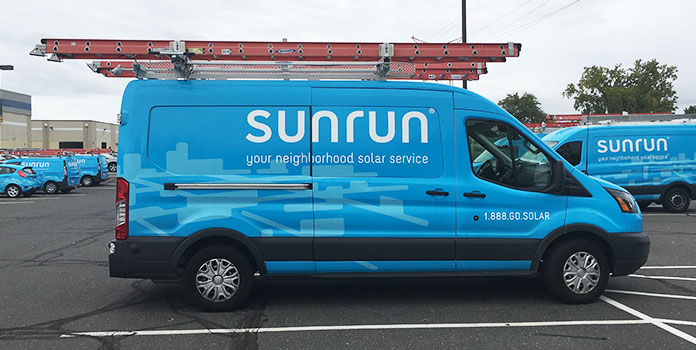
Just like all big solar installers, Sunrun has an extremely, let’s say varied, track record when it comes to customer reviews. Most homeowners have a great experience with the company, but when something goes wrong, projects can stall out in a bog of poor communication and under-trained employees.
Below we compare Sunrun’s customer review scores on Yelp and review platform BestCompany against SolarCity and Vivint. Overall, Sunrun’s scores are equal to or slightly better than its competitors (though that’s not saying much). Review information is current as of December 2017:
Yelp (San Francisco area)
- Sunrun: 2.5 out of 5 (173 reviews)
- SolarCity: 2 out of 5 (276 reviews)
- Vivint Solar: 2.5 out 5 (70 reviews)
BestCompany
- Sunrun: 3.5 out of 5 (341 reviews)
- SolarCity: 3 out of 5 (497 reviews)
- Vivint Solar: 3 out of 5 (608 reviews)
You can see that Sunrun typically ranks about a half point higher than its rivals on both platforms, though their reviews are still far from perfect.
As we mentioned, most homeowners enjoy their experience working with the company. However, things can and do go wrong during many homeowners’ installation process – from unexpected roof issues, to supplier problems, to your HOA not giving consent, and a billion other things.
If a company is well-organized with well-trained staff, they can jump these hurdles quickly. If not, projects can sit in limbo and customers become angry. That’s when review scores start to drop.
Unfortunately, Sunrun can’t quite seem to handle all of the issues that come up with grace and poise. When we delve into the Yelp reviews, we find that Sunrun received 60 5-star reviews (great!), but 76 1-star reviews (not so great).
Of those who left a good review, customers report the process was smooth and employees were communicative. Here’s Peter on Yelp:
“Sunrun’s offering had competitive pricing and their sales rep… was very knowledgeable, informative, transparent and responsive. Their analysis team was prompt, competent and courteous and came back with a solid proposal for how to make the most power while meeting our aesthetic needs. Their installation team was top-rate, quick, competent and even dealt very effectively with some stumbling by our local electrical inspector. Our installation is cleanly laid out and well done.
Of those who left negative feedback, almost all complain of extremely poor customer service. This is where Costco comes in handy, as they can work on your behalf in a difficult situation. Here’s a Yelp user describing his experience working with Costco and Sunrun after cancelling his project due to the 6-month period of inactivity on Sunrun’s part:
“Six months and glad I had Costco as the middle man, no trouble getting a refund. Met the SUNRUN folks at Costco. Went through the survey and design phases. During this time the original rep left SUNRUN. Another rep was supposed to handle everything going forward. Signed all the paperwork and paid at COSTCO, was told all the permits were pulled and then began the wait.
Tried to contact SUNRUN and all my communications fell into a black hole. Called the SUNRUN number for the nth time and got a “Hello, Joe”. Is that how a business answers the phone? Asked about my project and was told they still needed a permit.”
For a deeper dive into what actual customers have to say about working with Sunrun, check out our articles:
- Common Sunrun Solar Complaints: What’s the Story?
- Is Sunrun a Good Deal?
- Sunrun vs SolarCity: What Do Customer Reviews Say?
Should You Move Forward with Costco Solar?
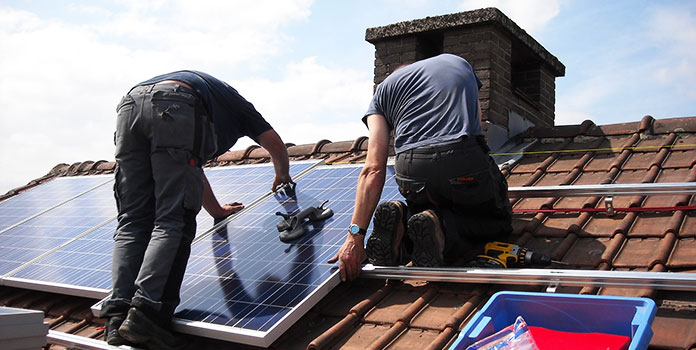
If you’re open to a DIY installation, Costco’s Grape Solar Kit can be much cheaper than hiring out the entire process. However, if you’re interested in DIY at all, you’re probably driven by cutting costs as much as possible. To this end, you could probably save more by piecing together a similar installation yourself or finding another kit.
If you’re looking to hire a solar company to install your system for you, Costco is a great conduit to working with Sunrun and their importance to Sunrun’s business offers a bit of protection for you if things go awry (which, as the review above testifies, is possible).
However, even if you’re dead-set on Sunrun, keep in mind that the best way to get a great deal going solar is to get estimates from several companies, including local installers. In fact, smaller installers oftentimes can offer lower prices, as they don’t suffer from the same high sales and overhead costs that plague the big boys, as well as provide more attentive service since they’re working with fewer customers.
Whoever you work with, just do your homework and read up on them before signing the dotted line. (Good job! You’re already doing that.) Want to know how to find a great installer? Check out our post How to Find a Quality Installer Near You.
Have you worked with Costco or Sunrun? Tell us about your experience in the comments below!
Image Credits: CC via Flickr – 1, 3, 5 and Pixabay – 2, 6 and Wikimedia – 4a, 4b
